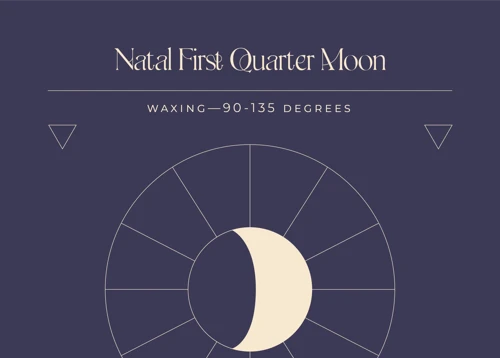Astrology is a fascinating field that provides insights into our personality traits, behavior patterns, and future events. One aspect of astrology that often captures our curiosity is the comparison between lunar phase charts and natal charts. These charts hold significant meaning, with each offering a unique perspective on our lives. Lunar phase charts track the moon’s cycle and its relationship to the sun, while natal charts provide a snapshot of the positions of the planets at the time of our birth. In this article, we will delve into the world of astrology, exploring the definitions, significance, and methods of comparing lunar phase charts and natal charts. By understanding these interconnections, we can gain enhanced astrological insights, predict future events, and identify personal patterns. So, let’s embark on this celestial journey and explore the wonders of astrology!
Understanding Lunar Phase Charts
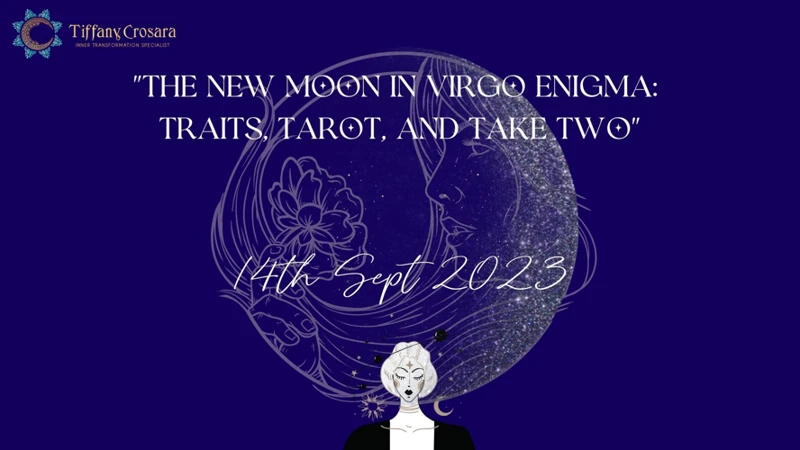
Lunar phase charts play an important role in astrology, shedding light on the relationship between the moon and the sun and how it impacts our lives. These charts are used to determine the phase of the moon at a specific moment in time, providing valuable insight into our emotional and intuitive nature. Understanding lunar phase charts involves recognizing the significance of each phase, such as Full Moon, New Moon, Waxing Crescent, Waning Gibbous, and everything in between. Each phase carries its own unique energy and influence, impacting various aspects of our lives, from our emotions and relationships to our personal growth and spirituality. By exploring lunar phase charts, we can gain a deeper understanding of ourselves and the world around us.
Definition and Significance
A lunar phase chart refers to a graphical representation that indicates the phase of the moon at a specific moment in time. It shows the relationship between the moon and the sun, documenting the moon’s journey through its different phases, such as the New Moon, First Quarter, Full Moon, and Last Quarter.
The significance of lunar phase charts lies in the understanding of the moon’s influence on our emotions, intuition, and energy. Each phase carries its own unique energy and symbolism that can impact various areas of our lives. For example, a Full Moon represents a time of culmination, heightened emotions, and clarity, while a New Moon signifies new beginnings and setting intentions.
By studying lunar phase charts, astrologers and individuals can gain valuable insights into the ebb and flow of emotional energy throughout the lunar cycle. These charts help in understanding the timing of certain events, emotional patterns, and personal growth opportunities. Many people find that tracking lunar phases can provide a sense of connection to the natural cycles and a deeper understanding of their own emotions and experiences.
Understanding the significance of lunar phase charts can also be helpful in the context of astrology readings and interpretations. Astrologers consider the phase of the moon at the time of a person’s birth as an essential component of their natal chart. It provides further insight into their emotional nature, subconscious patterns, and potential life themes.
Lunar phase charts hold great significance in astrology, allowing us to connect with the moon’s energy and gain a deeper understanding of ourselves. Whether we seek personal growth, relationship compatibility, or simply a closer connection to the natural world, exploring lunar phase charts can be enlightening and empowering.
Types of Lunar Phase Charts
There are various types of lunar phase charts in astrology, each offering a unique perspective on the moon’s cycle and its influence on our lives. Understanding these different types can provide valuable insights into different aspects of our existence. Here are some common types of lunar phase charts:
1. **Progressed Lunar Phase Chart:** This type of chart takes into account the progression of the moon’s phases over time. It reflects the evolving nature of our emotional and intuitive selves, highlighting how we grow and develop through the different lunar phases.
2. **Synastry Lunar Phase Chart:** Synastry charts compare the lunar phase of one individual to another, analyzing the compatibility and dynamics between them. This type of chart is commonly used in relationship astrology to understand the emotional connection and potential challenges within partnerships.
3. **Forecast Lunar Phase Chart:** Forecast charts focus on the upcoming lunar phases and their potential impact on our lives. They help us anticipate emotional shifts, decision-making opportunities, and areas of focus for personal growth.
4. **Lunar Return Chart:** Similar to a solar return chart, a lunar return chart is created for the exact time when the moon returns to its natal position in our birth chart, which happens approximately every 29.5 days. This chart provides insights into our emotional state, intuitive abilities, and opportunities for personal development during that lunar cycle.
Each of these lunar phase charts offers a unique perspective on the moon’s influence on our lives, from personal growth and relationships to future events and decision-making. Exploring the different types can provide a deeper understanding of our emotional selves and the cosmic forces at play.
Understanding Natal Charts
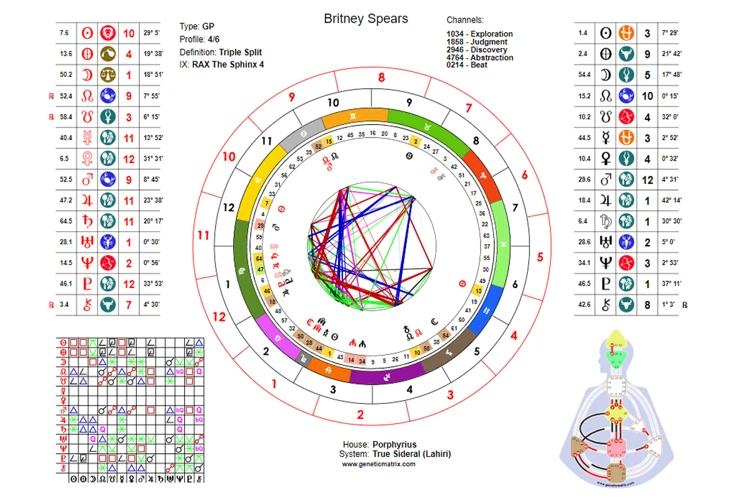
Natal charts are fundamental components of astrology, offering a personalized snapshot of the positions of the planets at the exact moment of an individual’s birth. These charts provide a detailed map of the celestial bodies, showcasing their unique placements in different astrological houses and zodiac signs. The elements of a natal chart include the sun, moon, planets, asteroids, and other astrological points, each representing different aspects of one’s personality, behavior patterns, and life experiences. Understanding natal charts is crucial for gaining insight into our strengths, weaknesses, desires, and potentials. By exploring the intricate details of our natal charts, we can uncover valuable information about ourselves and navigate life’s challenges and opportunities with greater self-awareness and purpose. To delve deeper into the world of astrology, it is important to comprehend the connections between lunar phase charts and natal charts, as they together contribute to the multifaceted tapestry of our lives.
Definition and Significance
Lunar phase charts in astrology provide a visual representation of the moon’s position in relation to the sun at a specific time. They depict the various stages of the moon’s cycle, ranging from the New Moon phase, where the moon is not visible, to the Full Moon phase, where the moon appears fully illuminated. Each phase has its own unique energy and symbolism. The moon’s phase in a lunar phase chart reflects the current state of emotional and intuitive energy. It provides insights into our inner world, our moods, and how we respond emotionally to different situations. The significance of lunar phase charts lies in their ability to offer a deep understanding of our emotional landscape and the cyclical nature of life. By analyzing the moon’s phase in relation to our natal chart or examining the moon’s transits, we can gain valuable insights into our emotional patterns and the potential challenges and opportunities that may arise during different lunar phases. Understanding the definition and significance of lunar phase charts allows us to navigate our lives with greater self-awareness and make conscious choices aligned with the cosmic energies at play.
Elements of a Natal Chart
The elements of a natal chart provide a comprehensive snapshot of the positions and relationships of the planets at the time of a person’s birth. These elements include the sun, moon, ascendant, planets, houses, and aspects. The sun represents the core essence of an individual’s personality, their ego, and self-expression. The moon signifies emotions, instincts, and the subconscious mind. The ascendant, also known as the rising sign, represents how a person presents themselves to the world and their initial impression on others. The planets, such as Mercury, Venus, and Mars, each have their own distinct qualities and energies that influence different areas of life. The houses in a natal chart represent different life areas or sectors, such as career, relationships, and spirituality. The aspects, which are the angles formed between planets, reveal the dynamic connections and interactions between them. These elements work together to create a unique and detailed portrait of a person’s individuality, strengths, challenges, and potentials. By analyzing the elements of a natal chart, astrologers can provide deep insights into a person’s personality traits, life path, compatibility with others, and potential life events. Understanding the elements in a natal chart allows individuals to gain a deeper understanding of themselves and navigate their lives with greater clarity and self-awareness.
Comparing Lunar Phase Charts and Natal Charts
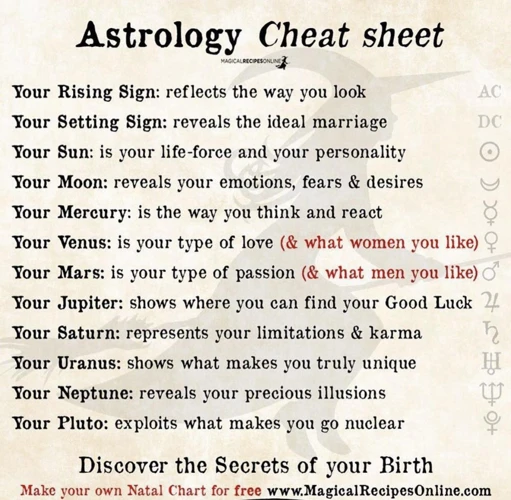
Comparing lunar phase charts and natal charts is a fascinating endeavor within astrology. While lunar phase charts focus on the moon’s cycle and its relationship to the sun, natal charts provide a comprehensive snapshot of the positions of the planets at the time of our birth. The similarities and differences between these charts offer valuable insights into our personality, behavior, and life events. By analyzing both charts together, we can uncover how lunar phases interact with our natal placements, further enhancing our astrological understanding. This comparison allows us to identify patterns, predict future events, and explore the dynamics between our inner selves and the external cosmic energies. Whether it’s examining the influence of lunar phase charts on personal growth or diving into the relationship compatibility between lunar phases and natal charts, this exploration of the intricate connections can provide profound insights into our lives.
Similarities and Differences
Similarities and differences exist between lunar phase charts and natal charts, making them distinct yet interconnected components of astrology. Both charts provide valuable insights into our lives, but they focus on different aspects. Lunar phase charts track the moon’s cycle and its relationship to the sun, representing the emotional and intuitive energies present at a specific moment in time. In contrast, natal charts are personalized maps that outline the positions of celestial bodies at the time of our birth, offering a snapshot of our personality traits, strengths, and challenges throughout our lives. While both charts offer valuable information, their primary focus is different. Lunar phase charts examine our emotional landscape and current energetic influences, while natal charts provide a comprehensive understanding of our overall nature and potential.
How They Interact in Astrology
How Lunar Phase Charts and Natal Charts interact in astrology is a fascinating aspect to explore. These two types of charts provide complementary information that helps astrologers gain a more comprehensive understanding of an individual’s personality and life events. The positioning of celestial bodies in the natal chart provides a blueprint of an individual’s character and life path. On the other hand, lunar phase charts offer insights into emotional patterns and cycles that shape a person’s experiences.
When comparing these charts, astrologers look for connections and alignments between the planets in the natal chart and the lunar phases. These interactions can signify important themes and potential influences in an individual’s life. For example, a person born under a Full Moon may experience heightened emotions and a strong drive for fulfillment in their relationships.
Another way they interact is through the interpretation of lunar phase transits in relation to the natal chart. Transits occur when the current position of the moon aligns with specific points in the natal chart. These transits can bring forth emotional shifts, opportunities for growth, or significant life events. By analyzing these transits alongside the natal chart, astrologers can provide valuable insights into timing, personal development, and potential challenges an individual may face.
Ultimately, the interaction between lunar phase charts and natal charts allows astrologers to paint a richer and more nuanced picture of an individual’s life. It helps in understanding the underlying emotional landscape, identifying key life themes, and predicting potential influences on personal growth and relationships. The synergy between these two charts enhances the accuracy and depth of astrological interpretations and offers valuable guidance for individuals seeking self-discovery and personal transformation.
Benefits of Comparing Lunar Phase Charts and Natal Charts
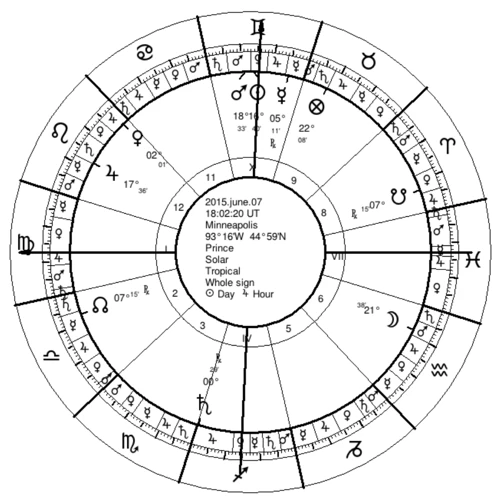
Comparing lunar phase charts and natal charts in astrology can yield a multitude of valuable benefits and insights. One of the key advantages is the enhanced astrological understanding it provides. By examining the alignments and aspects between the moon and planets in the natal chart, along with the lunar phase in the lunar phase chart, we can gain a deeper understanding of our personality traits, emotions, and life path. Additionally, comparing these charts allows us to predict future events and occurrences with greater accuracy. The combination of celestial energies in both charts can provide valuable insights into upcoming opportunities and challenges. By comparing lunar phase charts and natal charts, we can identify personal patterns and recurring themes in our lives. This self-awareness can empower us to make conscious choices and navigate our journey with greater clarity. So, exploring the relationship between lunar phase charts and natal charts can open a world of possibilities for personal growth and self-discovery.
Enhanced Astrological Insight
Enhanced astrological insight is one of the key benefits of comparing lunar phase charts and natal charts in astrology. By examining the interactions and alignments between these two charts, we can gain a deeper understanding of our personality, strengths, challenges, and potential life events. The lunar phase chart provides us with valuable information about our emotional nature, intuition, and how we respond to the ever-changing cycles of the moon. On the other hand, the natal chart gives us insights into our unique traits, life path, and the positions of the planets at the time of our birth. By integrating these two charts, we can uncover hidden patterns, connections, and potential energy dynamics that can greatly enhance our understanding of ourselves and our place in the cosmos. This holistic approach to astrology allows us to gain a more comprehensive and nuanced perspective on our lives and the forces at play. Whether we are exploring our lunar phase chart and its influence on our personal growth or examining the relationship compatibility between lunar phase charts and natal charts, the goal remains the same – to gain enhanced insight and a deeper connection to the cosmic energies that shape our existence. So, let’s delve into the world of astrology and unlock the secrets that lie within the intricate interplay of lunar phase charts and natal charts.
Prediction of Future Events
Prediction of future events is a compelling aspect of astrology that can be explored through the comparison of lunar phase charts and natal charts. These charts provide valuable information about the planetary positions and their influence on our lives, enabling astrologers to make predictions about potential future events. By analyzing the alignment of planets in both charts, astrologers can identify patterns and transits that may indicate upcoming opportunities, challenges, or significant life events. For instance, if a person’s natal chart shows a strong Mars influence, and a lunar phase chart reveals the presence of a New Moon, it could suggest a time of new beginnings and assertive actions in the future. The comparison of these charts allows astrologers to gain a comprehensive understanding of possible future trends and provide valuable insights to individuals seeking guidance. However, it is important to note that astrology is not an exact science and should be approached with an open mind and a degree of skepticism. The interpretation of future events based on these charts should be seen as potential probabilities rather than guaranteed outcomes. Nonetheless, the examination of lunar phase charts and natal charts can provide valuable clues and guidance when it comes to understanding the potential trajectory of our lives.
Identification of Personal Patterns
Identification of Personal Patterns is a key aspect when comparing lunar phase charts and natal charts. These patterns reveal recurring themes, tendencies, and behaviors that influence our lives. By analyzing the lunar phase chart and the natal chart, we can identify patterns that may arise during specific phases of the moon or certain planetary alignments. For example, someone with a natal moon in a particular sign may notice certain emotional patterns or reactions that consistently manifest during specific lunar phases. These patterns can provide valuable insights into our behaviors, thought patterns, and emotional responses. By recognizing these patterns, we can begin to understand ourselves on a deeper level and make conscious choices to work with or transform these patterns to enhance personal growth. Astrologers often use techniques like chart overlays and transit analysis to identify these personal patterns, allowing individuals to gain a better understanding of themselves and make informed decisions about their lives. By exploring the influence of lunar phase charts on personal growth and examining how these charts interact with the natal chart, we can gain valuable insights that can empower and guide us on our life journey.
Methods for Comparing Lunar Phase Charts and Natal Charts
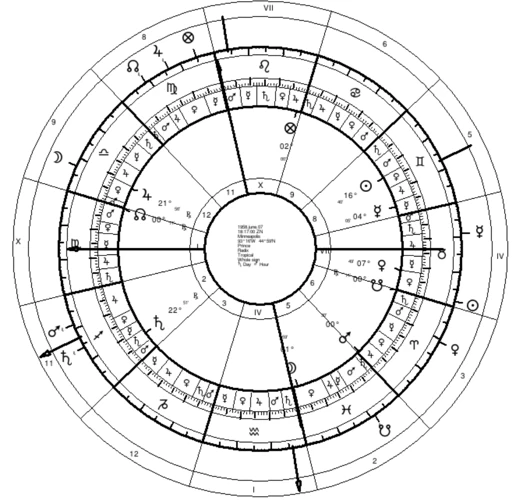
When it comes to comparing lunar phase charts and natal charts in astrology, there are several methods that can be employed. One method is overlaying the charts, where the two charts are placed on top of each other to identify any connections or alignments between the moon’s phase and the positions of the planets at the time of birth. This technique helps astrologers understand how the lunar phase influences the individual’s personality, behaviors, and areas of life that are influenced by the specific positions of the planets. Another method is identifying angular relationships between the moon’s phase and the planets in the natal chart. This involves examining the angles formed between the planets and the moon to analyze their potential impact on the individual’s life. Additionally, astrologers may examine lunar phase transits, observing how the moon’s current phase interacts with the planets in the natal chart and how it can influence the individual’s current experiences and emotions. By employing these methods, astrologers can gain deeper insights into the interconnectedness of lunar phase charts and natal charts, providing a more comprehensive understanding of an individual’s astrological makeup.
Overlaying Charts
Overlaying charts is a popular method used in astrology to compare and analyze lunar phase charts and natal charts. This technique involves superimposing the two charts on top of each other to identify correlations and connections between the positions of the moon and the planets at the time of birth. By overlaying charts, astrologers can visually assess the alignment of the lunar phase with specific planets or points in the natal chart, such as the Sun, Ascendant, or the personal planets. This comparison allows for a comprehensive understanding of how the lunar phase influences and interacts with various aspects of an individual’s personality, emotions, and life experiences.
To overlay charts, astrologers typically use specific software or astrology programs that provide the option to combine and display multiple charts simultaneously. The overlapping of charts enables astrologers to identify significant patterns, alignments, and aspects between the lunar phase and the planetary positions in the natal chart. For example, if a person’s natal Sun aligns with the Full Moon phase in the lunar chart, it may indicate a heightened sense of self-expression, emotions, and potential for creative endeavors. On the other hand, if the natal Moon coincides with a New Moon phase in the lunar chart, it might suggest a period of self-discovery, new beginnings, and emotional introspection.
By overlaying charts, astrologers can gain valuable insights into the relationship between lunar phases and the natal chart, providing a deeper understanding of an individual’s personality traits, behavioral patterns, and life themes. This method can be applied to various areas of astrology, including personal growth, relationship compatibility, and exploring the influence of lunar phases on different aspects of life. Whether it’s uncovering the impact of the Full Moon on personal growth and transformation or examining the connection between the New Moon and relationship dynamics, overlaying charts offers a visual representation that enhances astrological analysis and interpretation.
Overlaying lunar phase charts with natal charts allows astrologers to examine the correlation between the moon’s position and the planetary alignments at the time of birth. This method offers a comprehensive understanding of how the lunar phase influences and interacts with various aspects of an individual’s life. By identifying patterns and alignments through overlaying charts, astrologers can provide deeper insights into personal growth, relationship compatibility, and the impact of lunar phases on different areas of life.
influence-lunar-phase-charts-personal-growth
Identifying Angular Relationships
Identifying angular relationships between lunar phase charts and natal charts is a key aspect of astrological analysis. Angular relationships refer to the angles formed between celestial bodies and points in these charts. These relationships offer valuable insights into how the energies of the moon and planets interact and influence our lives. To identify angular relationships, astrologers examine the aspects formed between the moon and other planets or points in the natal chart. This involves identifying geometric patterns such as conjunctions, oppositions, squares, trines, and sextiles. Each aspect has its own unique meaning and signifies a particular interaction between the energies represented by the celestial bodies involved. For example, a conjunction represents an alignment of energies, while an opposition signifies tension or a need for balance. By studying these angular relationships, astrologers can gain deeper understanding of how lunar phases and planetary energies work together in shaping our personalities, relationships, and overall life experiences. For more information on how lunar phase charts impact relationship compatibility, visit here.
Examining Lunar Phase Transits
Examining lunar phase transits is an insightful practice in astrology that involves tracking the movement of the moon through its different phases and how it interacts with the planets in our natal chart. During a lunar phase transit, the moon forms various aspects and alignments with the planets in our chart, influencing our emotions, experiences, and overall energy. This examination allows astrologers and enthusiasts to gain deeper insights into the ebb and flow of our lives.
When examining lunar phase transits, it is crucial to consider the aspects formed by the moon with other celestial bodies. These aspects, such as conjunctions, squares, trines, and oppositions, provide valuable information about the energies at play during specific lunar phases. For example, a Moon-Sun conjunction during a New Moon phase signifies new beginnings and a time of fresh starts. Similarly, a Moon-Mercury square during a Waxing Crescent phase can indicate challenges in communication and decision-making.
In addition to aspects, the location of the moon within specific houses of the natal chart during a lunar phase transit is also significant. Each house represents different areas of life, such as career, relationships, and personal development. The house placement of the moon during a specific lunar phase transit can shed light on which aspect of our lives is most influenced by the moon’s energy at that time.
It’s essential to pay attention to any major patterns or themes that emerge during lunar phase transits. For instance, if a certain lunar phase consistently aligns with moments of personal growth or relationship upheavals, it may indicate a recurring pattern in our lives. By diligently examining lunar phase transits over an extended period, we can uncover personal patterns and gain a deeper understanding of our emotional landscape.
Examining lunar phase transits offers profound insights into the interplay of the moon’s energy with our natal chart. By considering aspects, house placements, and recurrent patterns during specific lunar phases, we can better understand our emotions, experiences, and personal growth. This practice helps us navigate the ever-changing tides of life with greater awareness and alignment.
Case Studies and Examples
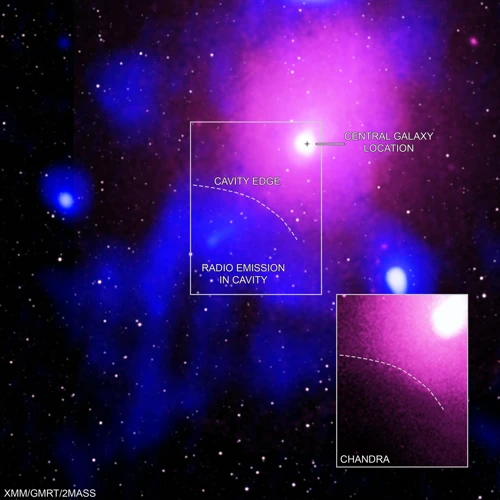
One of the best ways to grasp the concept of comparing lunar phase charts and natal charts is through case studies and examples. Let’s take a look at a few scenarios to illustrate how these charts interact and provide meaningful insights.
Case Study 1: Sarah’s Lunar Phase Chart and Natal Chart Analysis
Sarah, born during a Waxing Crescent phase, decides to compare her lunar phase chart with her natal chart. She realizes that her natal Moon is in close proximity to her natal Sun, indicating a strong connection between her inner emotional world and her outer personality. By aligning the lunar phase chart with her natal chart, she discovers that during the New Moon phase, she tends to experience a heightened sense of introspection and a desire for new beginnings. This information helps her navigate her emotions during specific lunar phases and make conscious choices aligned with her true self.
Case Study 2: John’s Lunar Phase Chart and Natal Chart Analysis
John, born during a Full Moon phase, decides to explore the influence of lunar phases on his relationships. Comparing his lunar phase chart with his natal chart, he realizes that his natal Venus is in close conjunction with his natal Moon, indicating a deep connection between his emotions and relationships. Through careful analysis, he discovers that during the Full Moon phase, he experiences intensified emotions and desires for deeper connections. Armed with this knowledge, John can approach his relationships with greater understanding and open communication during these lunar phases.
These case studies highlight the significance of comparing lunar phase charts and natal charts, allowing individuals to gain valuable insights into their emotions, personality traits, and life experiences. By analyzing these charts together, we can uncover hidden patterns, make sense of our experiences, and navigate our lives with greater awareness and purpose.
Interpreting the Results
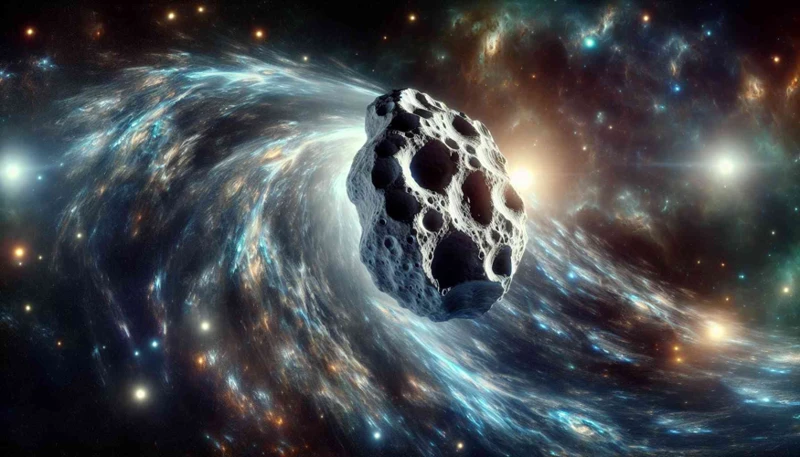
Interpreting the results of comparing lunar phase charts and natal charts is a crucial step in unlocking the deeper meaning behind these astrological analyses. One aspect of interpretation involves examining the alignments and aspects between the two charts. These alignments can reveal the harmonious or challenging dynamics between the moon, planets, and other celestial bodies, providing insight into how they interact and influence each other in our lives. Another facet of interpretation is the analysis of the houses in the natal chart and how they are affected by the lunar phase. Each house represents different areas of our life, such as career, relationships, and spirituality, and understanding how the lunar phase influences these areas can provide valuable insights. Evaluating lunar phase changes over time gives us a glimpse into the cyclical nature of life and enables us to identify recurring patterns and themes. By carefully interpreting the results, we can unravel the intricate tapestry of astrology and gain a deeper understanding of ourselves and our life’s journey.
Alignments and Aspects
Alignments and aspects are fundamental components in the comparison of lunar phase charts and natal charts. Alignments refer to the positioning of celestial bodies (such as planets) in relation to each other, while aspects describe the geometric angles formed between these bodies. These alignments and aspects hold great significance in astrology as they shape the energy and interactions between different celestial entities.
In comparing lunar phase charts and natal charts, we analyze the alignments and aspects to gain deeper insights into the influences at play. For example, if the natal chart indicates that the moon is in a harmonious aspect with Venus, indicating emotional sensitivity and a deep desire for love and beauty, we can explore how this aspect interacts with the lunar phase chart. If the lunar phase chart shows that the moon is in a Waxing Crescent phase, suggesting new beginnings and growth, we can interpret how this alignment impacts one’s emotional well-being and relationships during this phase.
Additionally, alignments and aspects can help us identify potential challenges or conflicts. For instance, if the natal chart reveals a square aspect between Mars and the moon, suggesting tension and the need for assertiveness, we can examine how this aspect interacts with the lunar phase chart. If the lunar phase chart indicates that the moon is in a Full Moon phase, symbolizing intensity and culmination, we can explore how this alignment may manifest in emotional outbursts or the need for balance.
By carefully analyzing the alignments and aspects in both lunar phase charts and natal charts, astrologers can paint a comprehensive picture of how various celestial energies intertwine and influence different areas of our lives. It allows us to understand the complex interplay between our inner psychology (as depicted in the natal chart) and the external energetic currents (as depicted through the lunar phase chart). This knowledge guides us in navigating life’s challenges and harnessing the energies for personal growth, emotional well-being, and alignment with the natural rhythms of the Universe.
House Analysis
House analysis is a crucial aspect of comparing lunar phase charts and natal charts in astrology. In astrology, the birth chart is divided into twelve houses, each representing different areas of our lives. By examining how the lunar phase charts and natal charts interact within these houses, we can gain valuable insights about the key influences and themes in our lives.
Here are some key points to consider when conducting a house analysis:
1. House Placement: The placement of the moon in a specific house indicates the area of life that is primarily influenced by our emotions and intuition. For example, if the moon is in the 10th house, it suggests that our emotions and intuition strongly influence our career and public image.
2. Aspects to Other Planets: Analyzing the aspects between the moon in the lunar phase chart and other planets in the natal chart within a specific house provides further information about how these planetary energies interact. For instance, a harmonious aspect between the moon and Venus in the 7th house may indicate a deep emotional connection in relationships.
3. House Rulers: Each house is ruled by a specific zodiac sign and planet. Understanding the ruling planet of a house can unveil further insights into the themes and energies associated with that specific area of life. For example, if the moon is in the 5th house ruled by Leo, it suggests that our emotions and intuitive nature play a significant role in our creativity and self-expression.
4. Stelliums and Clusters: Examining if there are multiple planets, including the moon, clustered within a particular house, known as a stellium, can highlight areas where a significant concentration of energy is present in our lives. This can indicate strong influences and tendencies in specific aspects of life, such as career, relationships, or personal development.
By conducting a thorough house analysis, we can gain deeper insights into the areas of our lives where the lunar phase charts and natal charts intersect. This can provide valuable guidance for self-discovery, personal growth, and understanding the underlying dynamics influencing our experiences.
Evaluating Lunar Phase Changes
Evaluating lunar phase changes is a crucial aspect of astrological analysis. When we observe the shifts in lunar phases, we gain valuable insights into the ebb and flow of energy in our lives. Each lunar phase has its own unique qualities and influences, which can greatly impact our emotions, relationships, and various areas of life. By monitoring the transitions between different lunar phases, we can identify patterns and trends that occur in our experiences and understand how they correspond with the different phases of the moon. Evaluating lunar phase changes also involves examining any alignments or aspects between the moon and other celestial bodies in our natal chart. These alignments provide additional layers of meaning and can offer insight into the specific areas of life that are being affected by the lunar phase changes. For example, a Full Moon in close aspect to Venus may highlight the themes of love, relationships, and creativity. On the other hand, a New Moon in alignment with Saturn may indicate a time of introspection, discipline, and setting goals. By closely examining these alignments and the changes in lunar phases, we can gain a deeper understanding of the energy at play and make more informed decisions about our actions, relationships, and personal growth. Understanding how the lunar phase changes within the context of our own natal chart allows us to harness the energy and work with it to our advantage, facilitating alignment and growth in our lives.
Tips and Considerations
When it comes to comparing lunar phase charts and natal charts in astrology, there are a few tips and considerations to keep in mind. First and foremost, seeking professional astrological guidance is highly recommended. Astrologers can provide valuable insights and interpretations that may not be easily accessible to those without expertise in the field. Additionally, applying personal intuition is crucial. Trusting your instincts and inner guidance can help you make deeper connections between the charts and unveil hidden meanings. It’s important to remember that astrology is a highly personal and subjective practice, so allowing yourself to tap into your own intuition can enhance the accuracy and relevance of your interpretations. By keeping these tips and considerations in mind, you can delve into the world of lunar phase charts and natal charts with confidence and curiosity, ultimately gaining a deeper understanding of yourself and the cosmos.
Seeking Professional Astrological Guidance
When delving into the complexities of comparing lunar phase charts and natal charts, it can be beneficial to seek professional astrological guidance. Astrologers who specialize in chart interpretation can provide valuable insights and interpretations that may not be immediately apparent to those unfamiliar with the astrological nuances. These professionals have studied the intricate art of astrology and are experienced in analyzing the intricacies of both lunar phase charts and natal charts.
By seeking professional astrological guidance, individuals can receive personalized interpretations of their charts, helping them gain a deeper understanding of themselves and their life path. Astrologers can identify significant alignments, aspects, and patterns within the charts that may go unnoticed by a casual observer. This expert guidance can provide a more comprehensive analysis and interpretation of the relationship between lunar phase charts and natal charts.
Additionally, professional astrologers can offer clarity and validation when individuals are grappling with life’s challenges or seeking guidance for important decisions. With their knowledge and experience, astrologers can help individuals navigate difficult periods, identify potential opportunities, and offer guidance on personal matters, relationships, career choices, and more.
Working with a professional astrologer allows individuals to tap into an expert’s wealth of knowledge and insight. It offers a space for open discussion, where individuals can ask questions, seek clarification, and explore the deeper meanings behind their charts. This collaborative approach allows for a personalized and meaningful interpretation of the lunar phase charts and natal charts, tailored to suit each individual’s unique circumstances and needs.
Ultimately, seeking professional astrological guidance adds an additional layer of depth to the exploration of comparing lunar phase charts and natal charts. It provides individuals with an opportunity to gain a deeper understanding of themselves, their relationships, and their life’s journey through the lens of astrology.
Applying Personal Intuition
Applying personal intuition is a crucial aspect when comparing lunar phase charts and natal charts, as it allows individuals to tap into their own inner wisdom and make meaning out of the astrological insights. While astrology provides a framework and guidelines, it is ultimately up to each person to interpret and apply the information in a way that resonates with their unique experiences and intuition. Trusting one’s intuition can uncover deeper layers of meaning in the charts, revealing hidden patterns and connections that may not be immediately apparent. Intuition can also guide us in understanding the nuances and subtleties of the charts, helping us to make more accurate and insightful observations. It is important to remember that astrology is not a rigid set of rules but rather a tool for self-exploration and self-understanding. By applying personal intuition, individuals can uncover profound insights and gain a deeper connection with the celestial energies reflected in their charts.
Conclusion
In conclusion, comparing lunar phase charts and natal charts in astrology can provide a wealth of knowledge and insight into our personalities, behavior patterns, and future events. By understanding the definitions and significance of both types of charts, we can see how they interact and complement each other in the world of astrology. The benefits of comparing these charts are numerous, including enhanced astrological insight, the ability to predict future events, and the identification of personal patterns. Through methods such as overlaying charts, identifying angular relationships, and examining lunar phase transits, we can delve deeper into the connections between these charts. Case studies and examples can further illustrate how this comparison can be applied in practice. Interpreting the results involves analyzing alignments and aspects, evaluating house placements, and taking note of lunar phase changes. It is important to approach these comparisons with a sense of curiosity and open-mindedness, seeking professional astrological guidance when needed. It is also crucial to trust our own intuition and apply it to the interpretations. As we journey through the mysterious realms of astrology, embracing the connection between lunar phase and natal charts can bring us closer to understanding ourselves and our place in the universe.
Frequently Asked Questions
What is the significance of lunar phase charts in astrology?
Lunar phase charts hold significance in astrology as they reflect the relationship between the moon and the sun, influencing our emotions, intuition, and energetic patterns. They offer valuable insights into our subconscious and emotional well-being.
How do lunar phase charts differ from natal charts?
Lunar phase charts focus specifically on the moon’s position and phase at a certain time, while natal charts provide a snapshot of the positions of all the planets at the time of an individual’s birth. Natal charts offer a more comprehensive analysis of an individual’s personality and life potential.
Can lunar phase charts be used for relationship compatibility?
Yes, lunar phase charts can be a helpful tool in assessing relationship compatibility. They reveal each person’s emotional needs, communication styles, and ways of relating to others, providing insights into the dynamics between two individuals.
How can comparing lunar phase charts and natal charts enhance astrological insight?
By comparing lunar phase charts and natal charts, astrologers can gain a deeper understanding of an individual’s emotional patterns, their potential for personal growth, and how external factors such as the moon’s phases and planetary transits can influence their lives.
What are some methods for comparing lunar phase charts and natal charts?
Methods for comparison include overlaying the charts to identify corresponding elements, examining angular relationships between planets, and analyzing the impact of lunar phase transits on natal chart placements.
Can comparing lunar phase charts and natal charts help predict future events?
While astrology does not provide specific predictions, comparing these charts can offer insights into possible energetic influences and potential themes that may arise during different phases of the moon or planetary transits.
How can identifying personal patterns through charts benefit individuals?
Identifying personal patterns through lunar phase and natal charts allows individuals to gain self-awareness, recognize recurring themes in their lives, and make informed decisions aligned with their true nature and desires.
Why is seeking professional astrological guidance important when comparing these charts?
A professional astrologer can provide in-depth analysis, interpret complex astrological aspects, and provide guidance based on an individual’s specific chart comparisons. They possess the expertise to offer a nuanced perspective and insights into one’s life path.
What role does personal intuition play in comparing lunar phase charts and natal charts?
Personal intuition serves as a valuable tool when interpreting and correlating aspects of lunar phase and natal charts. It allows individuals to connect with their inner knowing and make their own interpretations based on their unique experiences.
Can comparing charts guide individuals in understanding their life purpose?
Comparing lunar phase charts and natal charts can offer insights into an individual’s life purpose by exploring planetary alignments, significant transits, and the relationship between the moon and the sun, helping individuals align with their true path and intentions.

